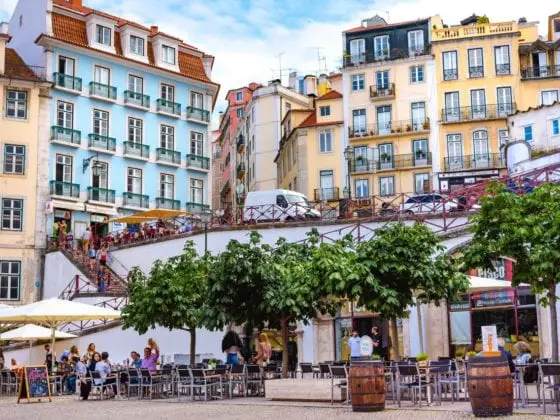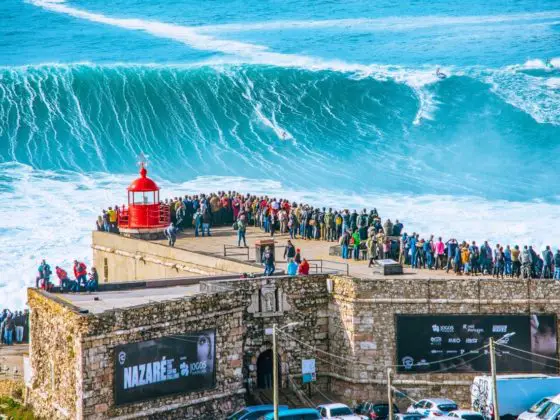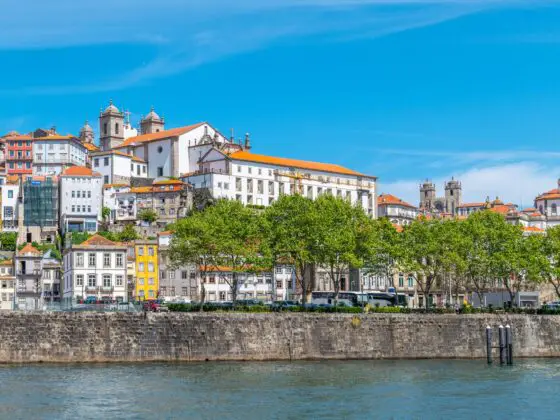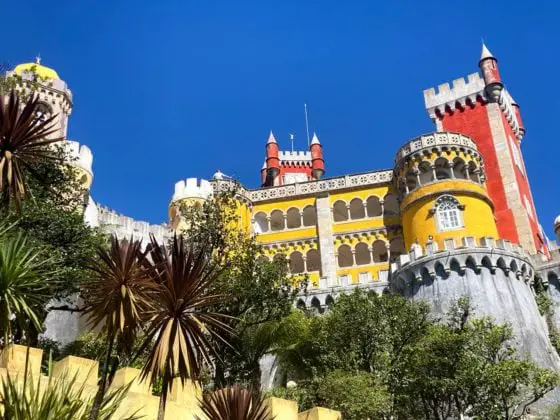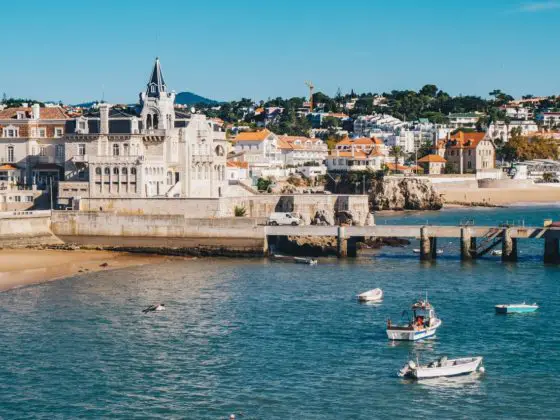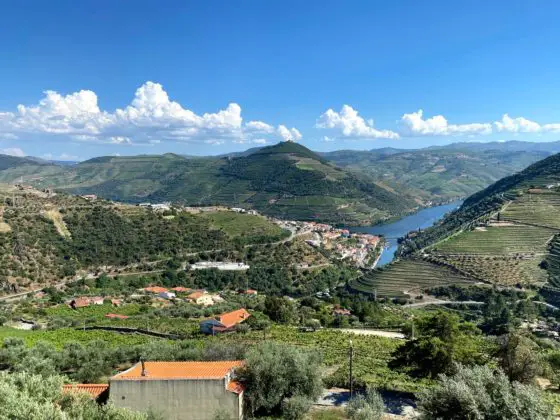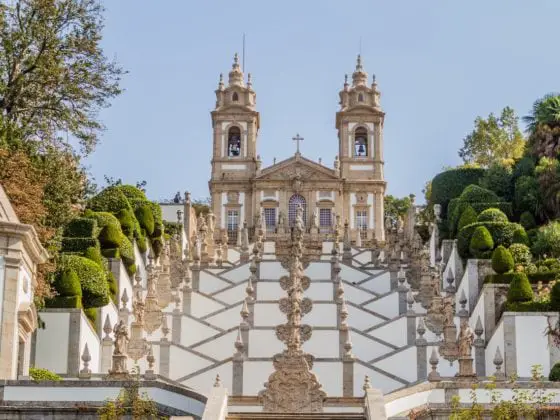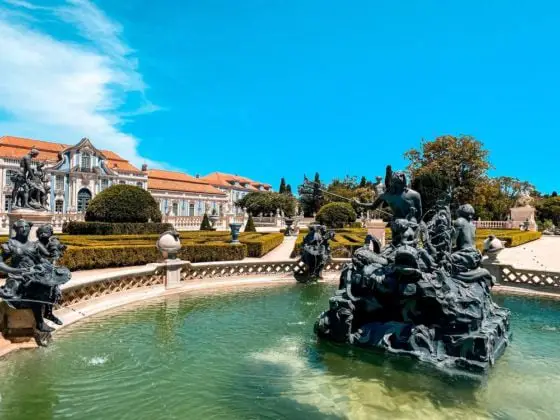There is a good chance that this post contains affiliate links. If you make a purchase through them, I may receive a small commission at no extra cost to you! As an Amazon Associate, I earn from qualifying purchases. As ever, all opinions are my own.
On your next trip to Portugal you should definitely squeeze in a visit to some of Portugal’s most famous landmarks. The challenge is how many you can visit in between munching on pastéis de nata (yummy Portuguese custard tarts), sipping Port wine, and lounging on the Algarve’s beaches!
Given Portugal’s long, winding, and varied history, it goes without saying that the country now has some fascinating landmarks that are recognisable the world over. And nope, despite what you may think, they’re not all buildings!
Obviously, I could write a list of 100 famous landmarks to visit in Portugal, but I doubt your trip to Portugal will offer you enough time to visit them all! So, after some long, hard, thinking, I have come up with the top 13 famous landmarks you need to add to your Portugal itinerary!
Table of Contents
Best Landmarks in Portugal
1. Praça do Comércio, Lisbon
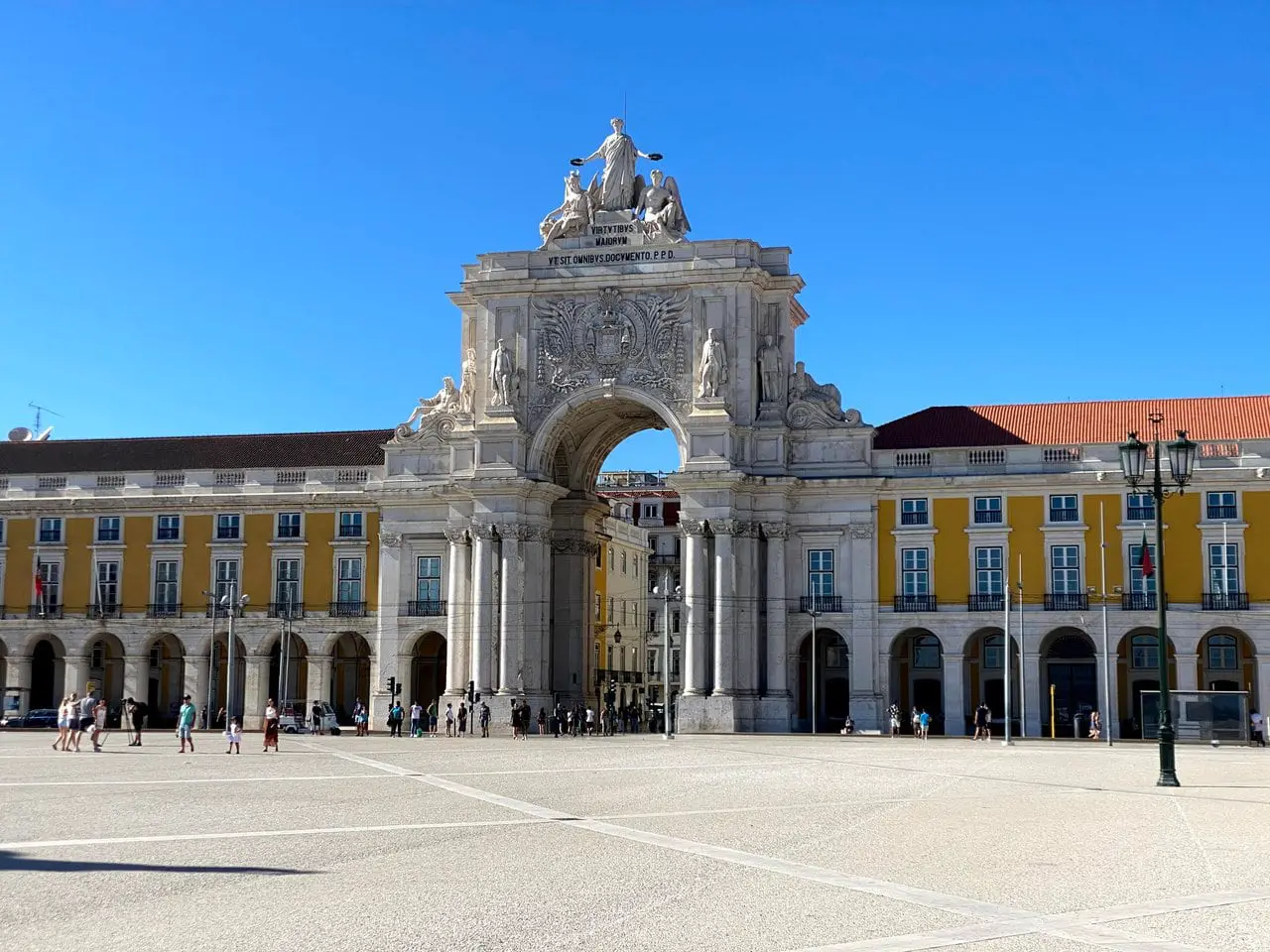
Probably the most recognisable landmark in Lisbon, the grand town square of Praça do Comércio is the gateway to the city and an unmissable stop on any Lisbon itinerary.
If you’ve ever seen a photo of Lisbon you’ll have probably seen the lemon meringue-coloured buildings bordering the square. You’ll also probably recognise the imposing Arco da Rua Augusta. This triumphal archway connects the Praça do Comércio to the rest of the city, and the viewing platform at the top offers unparalleled views.
The square itself is huge, backing on to the Tagus Estuary. It’s one of the best places to visit in Lisbon at sunset, when people come to see the sun sink into the estuary and bask in the late evening glow.
The plaza was originally called the Royal Yard, because, from the 16th century onwards Lisbon’s royal palace was situated on the western side of the square. However, after the devastating earthquake of 1755 it was all destroyed. The Praça do Comércio was then built in its place.
In the centre of the Praça do Comércio you’ll find a huge statue of Dom José I (King Joseph I) on horseback. You’ll notice that he’s facing away from the city. Some Portuguese people believe was intended to discretely shade the King, who many felt abandoned Lisbon after the earthquake.
2. Livraria Lello
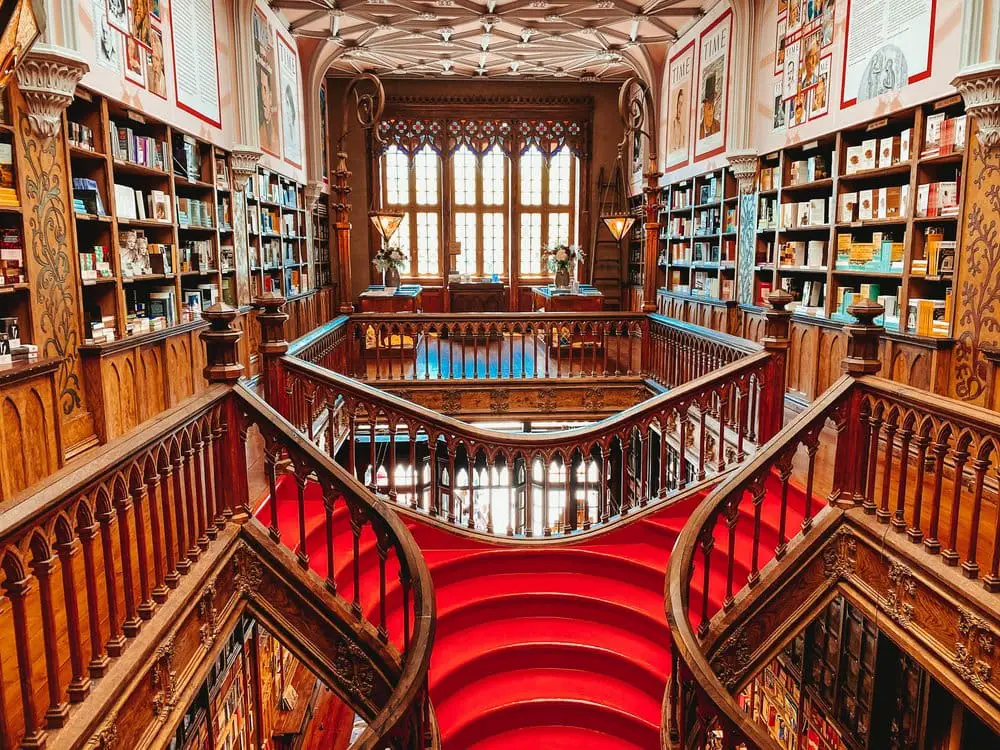
Perhaps more famously known nowadays as the “Harry Potter Library”, the Livraria Lello became one of Porto’s most famous buildings long before the popular series was published. In fact, it’s regularly voted one of the best bookshops in the world! It’s also one of the oldest bookshops in Portugal, and features on every Porto itinerary.
If you wander through Porto, chances are you’ll first notice Livraria Lello because of the huge queues outside. People queue for over three hours to visit here on summer weekends! To reduce your wait time to around one hour, visit at lunchtime on a weekday.
Although the pinnacles and stained-glass windows make the bookshop look castle-like from the outside, it’s even more magical inside. Its grand wooden staircase sits in the very centre of the bookshop and is the biggest tourist attraction of the building. Everybody wants to have their photo taken standing on it!
In terms of books, there actually isn’t a huge selection inside the Livraria Lello. I guess this makes sense, since it has to stock books in multiple languages to cater to all the visitors, but still… The reason you visit the Livraria Lello is because of its beautiful design, not really to go book shopping.
Entry costs €5, but you can redeem this if you purchase a book.
3. Jerónimos Monastery
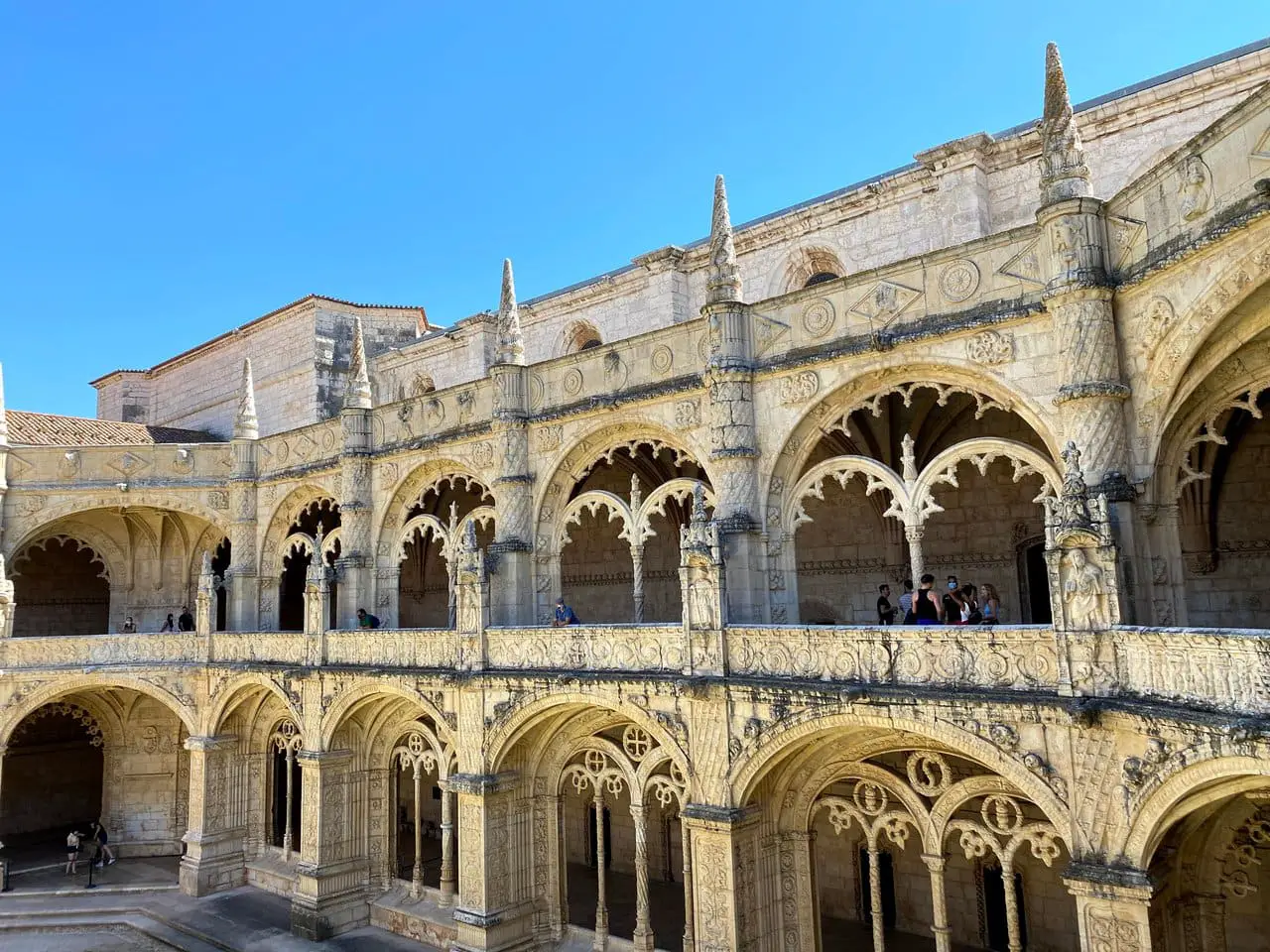
The gem of Lisbon’s Belém district is undoubtedly the Jerónimos Monastery (Mosterio dos Jerónimos). It was built by King Manuel I in 1502 to commemorate the success of nobleman Vasco de Gama. Don’t worry, I hadn’t heard of him before I visited either. Apparently, he was the first person to sail from Europe to India around Africa’s Cape of Good Hope.
Once the monastery was established, it was populated by the Order of St Jerome monks, whose role was to pray for the King and comfort sailors.
Entering the Jerónimos Monastery blows all of your expectations out of the water. It feels like the stone the building is carved out of simply glows in Portugal’s sunlight! You could spend hours wandering its spiderweb-like twists of columns, arches, and intricate decorations.
Keep your eyes open for the hilarious/creepy (they’re a bit of both) gargoyles lining the Monastery!
UNESCO agrees that this is one of the best landmarks to visit in Portugal, designating it as a World Heritage Site in 1983. It’s also said to be one of the best examples of European Gothic architecture. In fact, the style of the building it prompted a new architectural label, called “Manueline”. This unique style of Portuguese architecture glorifies the great exploration “discoveries” of that time.
Entry costs €10. Click here to get your skip-the-line tickets!
4. Benagil Cave
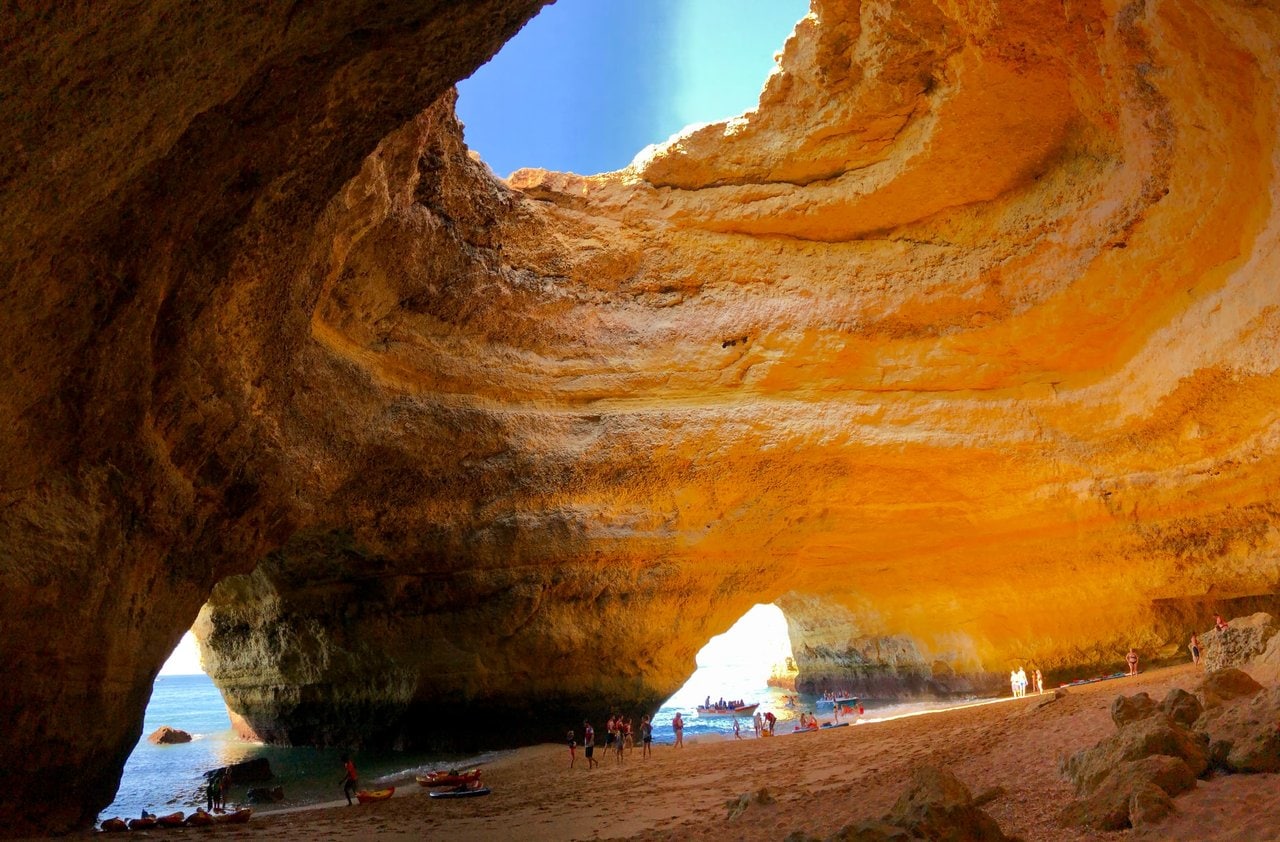
One of the best natural landmarks in Portugal is the jaw-dropping Benagil Cave. it’s gone viral on social media over the last few years, and is a huge tourist draw to the many towns in the Algarve surrounding the cave.
The huge, dome-like cave contains its own mini-beach and seashore, and the hole in the roof of the cave illuminates it with sunlight. You can walk to the cliffs above the cave to look through the hole, or, if you want to actually enter the cave, you’ll have to enter via the water. There are different boat, kayak and SUP tours that will take you to the Benagil Cave so you have a few different methods to choose from.
Although you can technically swim to the Benagil Cave it’s not recommended. This is because of the heavy boat traffic around the cave and also the strong, unreliable currents.
Aside from the Benagil Cave, it’s definitely worth spending time at the beach in Benagil. After all, you’ve made the journey there! Benagil itself is a tiny fishing village, but there are plenty of cliff-top restaurants offering brilliant views out to sea if you’d like to refuel after you visit the Benagil Cave!
This 2-hour speedboat tour departs from the popular Algarve town of Portimão and costs just €27, or you could take this highly-rated speedboat tour from Albufeira, which costs €35.
5. Nazare Lighthouse
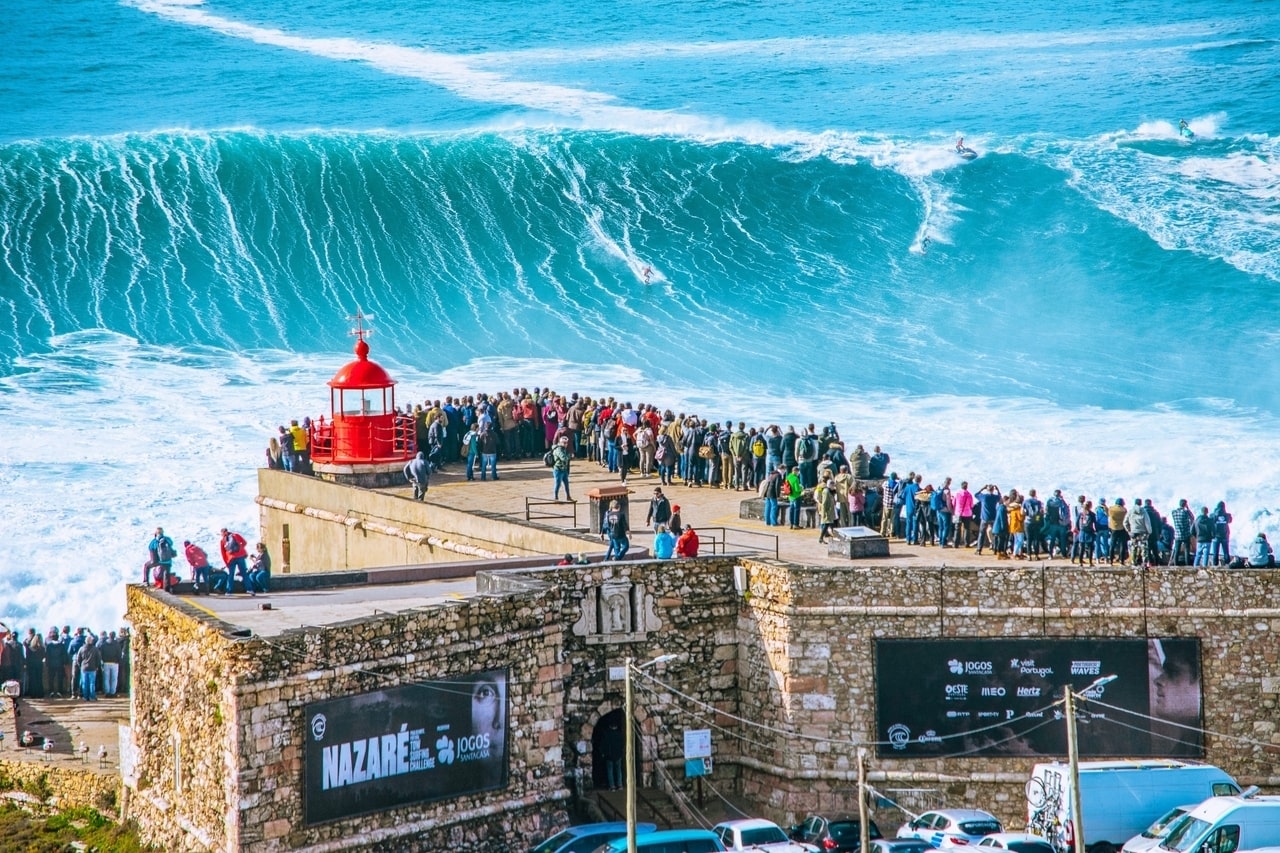
You may not have heard of this landmark unless you’re into surfing, but you’re in for a treat. This iconic red lighthouse is known the world over by surfers. This is because, come big wave season in the town of Nazare (October-March), people travel from all over the world to stand on the lighthouse’s platform. It’s the best place to watch crazy surfers tackle the monstrous waves that crash into the Praia do Norte beach below.
A visit to the Nazare Lighthouse is a visit to witness the raw force of nature. The waves here are huge. And yeah, when we’re talking about huge waves I really mean HUGE. These waves are often over 100 feet tall!
Even when it’s not the big wave season in Nazare, the Lighthouse is still absolutely worth a visit. The building the lighthouse sits upon actually houses a small yet captivating museum that documents the history of big wave surfing. It also exhibits some of the battered surfboards used to surf the Nazare big waves, and explains why the waves in Nazare get so massive. Entry costs €1, which is a pretty sweet deal!
You can visit Nazare on a day trip from Lisbon, but the Nazare Lighthouse is actually on the clifftops outside the town centre. To get here from the town you can either drive or take the funicular and then walk.
I visited the Nazare Lighthouse on this full-day tour from Lisbon and I highly recommend it!
6. Batalha Monastery
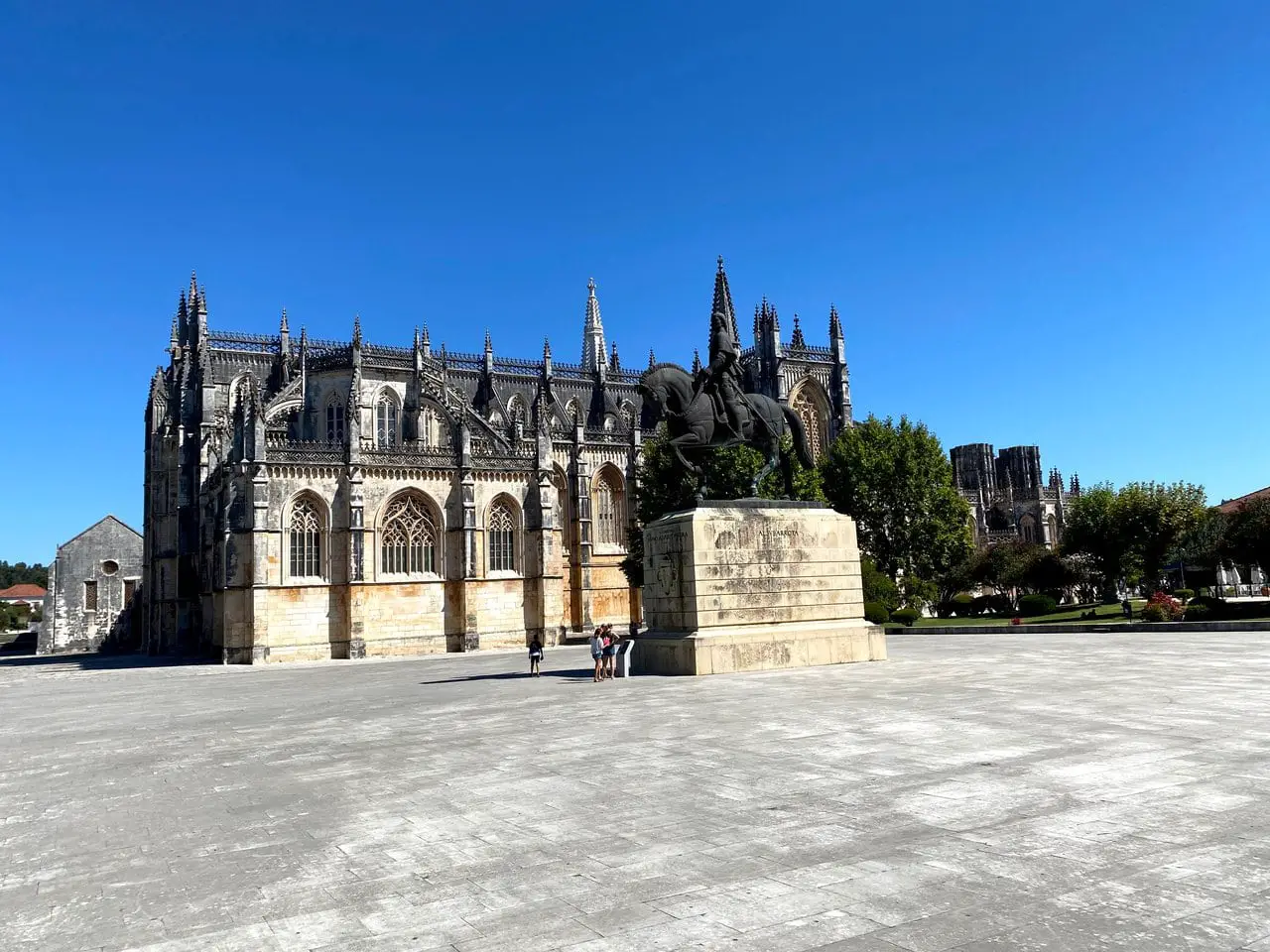
Next up is another UNESCO World Heritage Site – the Batalha Monastery. It was built in 1386 to commemorate the Portuguese victory over the Castilians at the Battle of Aljubarrota. Interestingly, the battle took place just south of the town of Batalha. Like the Jerónimos Monastery, you’ll notice plenty of features of the building in the extravagant Manueline architecture style.
There isn’t much to do in the town of Batalha itself, so this epic Monastery is pretty much the main reason tourists visit the city. Its presence is something the locals are very grateful for!
The limestone exterior of the monastery is a feast for the eyes, with turrets, pinnacles, massive columns and stained glass windows that will amaze you. Unsurprisingly, the inside is just as special.
You won’t need plenty of time at Batalha, since the only thing to check out is the Monastery. Although huge, you can definitely see it all in around half an hour. For this reason, I recommend combining a trip to Batalha with some other famous buildings and landmarks in Portugal.
I visited Batalha on this awesome day trip from Lisbon, which also stopped by Nazare, Fatima and Obidos. I highly recommend it! If you’re visiting the Batalha Monastery independently, entry tickets cost €6.
7. Coimbra University
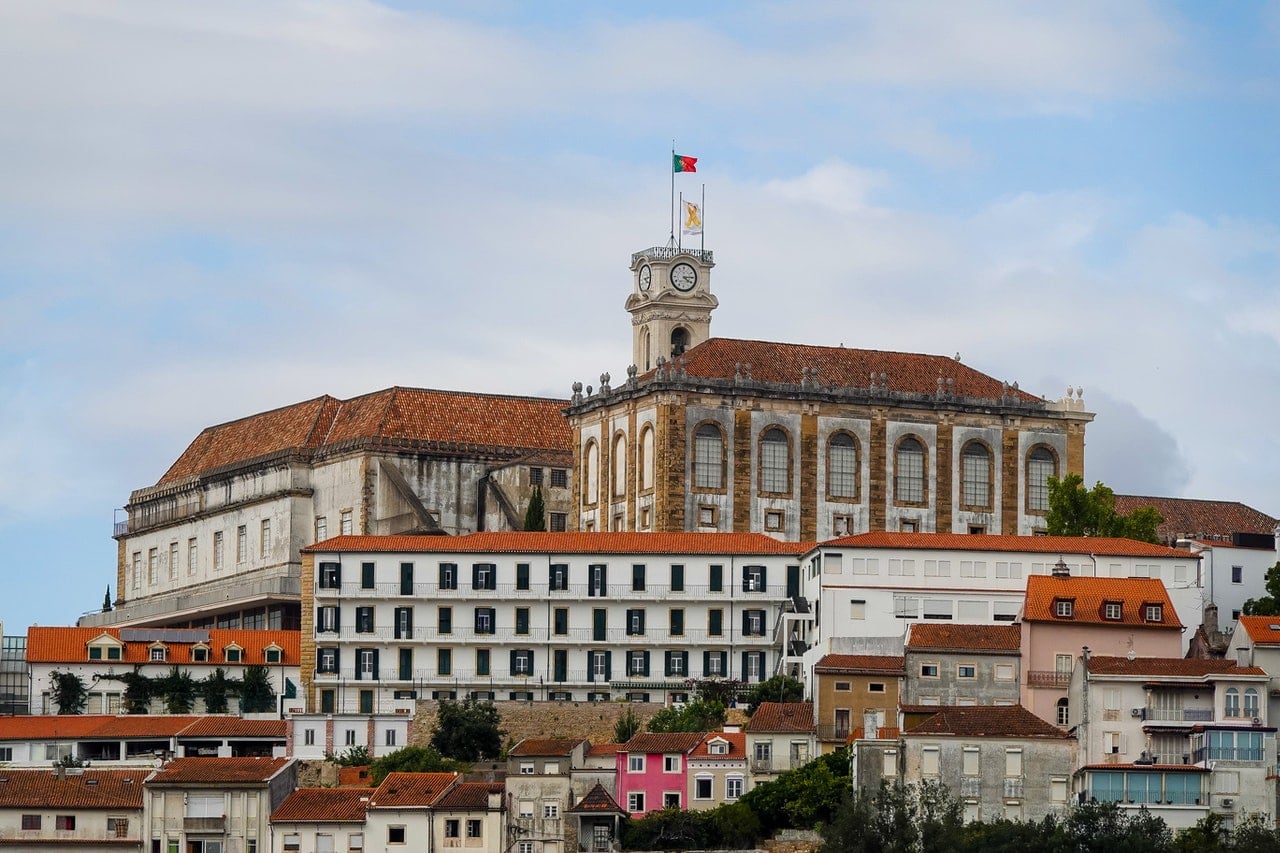
Coimbra University is one of the oldest in the world. Although established in Lisbon in 1290, the university has been in Coimbra since 1537. Today, the university has over 20,000 students and the majority of the teaching takes place in ugly 20th-century tower blocks. You’re not here to visit those, though – you’re here to visit the former royal palace complex at the university!
The parts of Coimbra University open to visitors are the Royal Palace Staterooms, the Torre da Universidade, the Biblioteca Joanina, and the Capela de Sao Miguel (chapel). The highlight of any trip to Coimbra University is the enchanting Biblioteca Joanina, which houses over 200,000 books! It’s also, bizarrely, home to a bat colony to protect the books from insects!
Inside the Royal Palace you’ll find many extravagant staterooms, the star of which is the former royal throne room, which is now where university ceremonies are held.
Make sure you don’t miss the Torre de Universidade. It’s included in your entry ticket and you can climb to the top of for knockout views over the city of Coimbra.
Entry tickets to enter the university’s attractions cost €12.50.
8. Dom Luis I Bridge
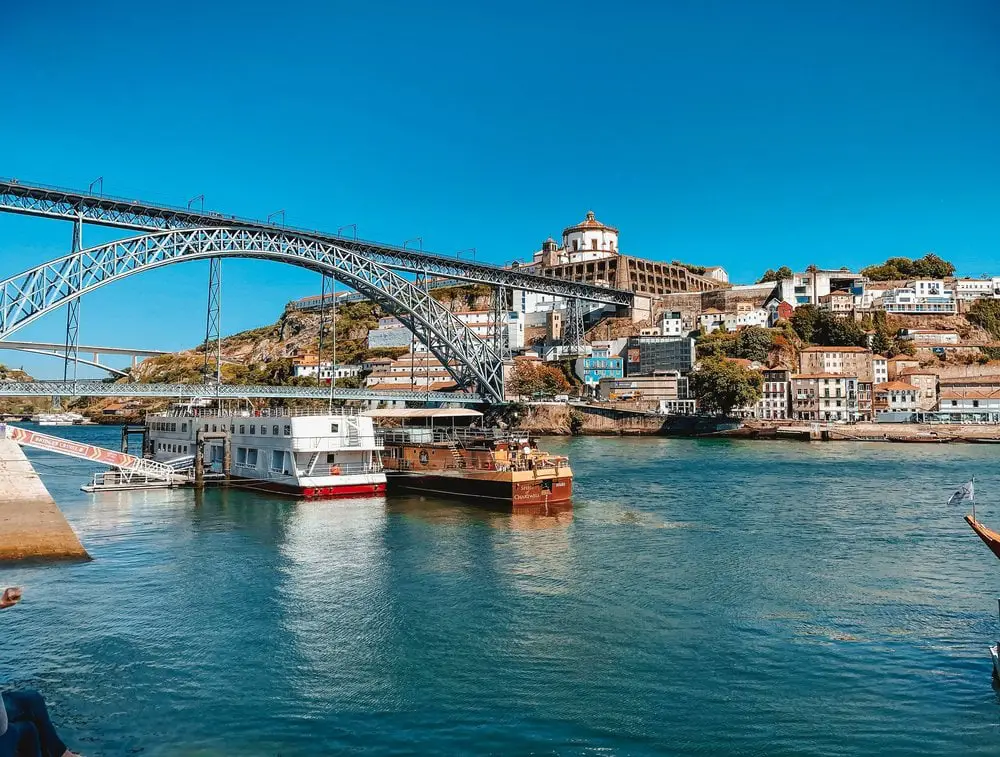
One of the most famous landmarks in Portugal is the Dom Luis I Bridge in Porto. It stretches across the Douro River, and is an essential part of the city’s skyline. It was built by a student of Gustave Eiffel (of Eiffel Tower fame) in 1886, and caters to foot traffic, regular car traffic, a metro line. There’s also a viewing platform on the bridge!
When it was first built it was the longest metal bridge in the world and provided the city of Porto with a much-needed safe way of crossing the river. The “bridge” it replaced was just a chain of old port boats connected together!
The bridge is one of the best viewpoints in Porto. On the bridge, you’ll get to look down on the colourful Ribeira district and the river. Walking on the bridge may not be for everybody, though, since it hovers around 60 metres above the water below. Not to worry, though, if you’d prefer you can check out the bridge from the ground below.
Plus, if you’re not on the bridge you can snap photos of it with postcard-perfect Porto in the background.
9. Sanctuary of Our Lady of Fatima
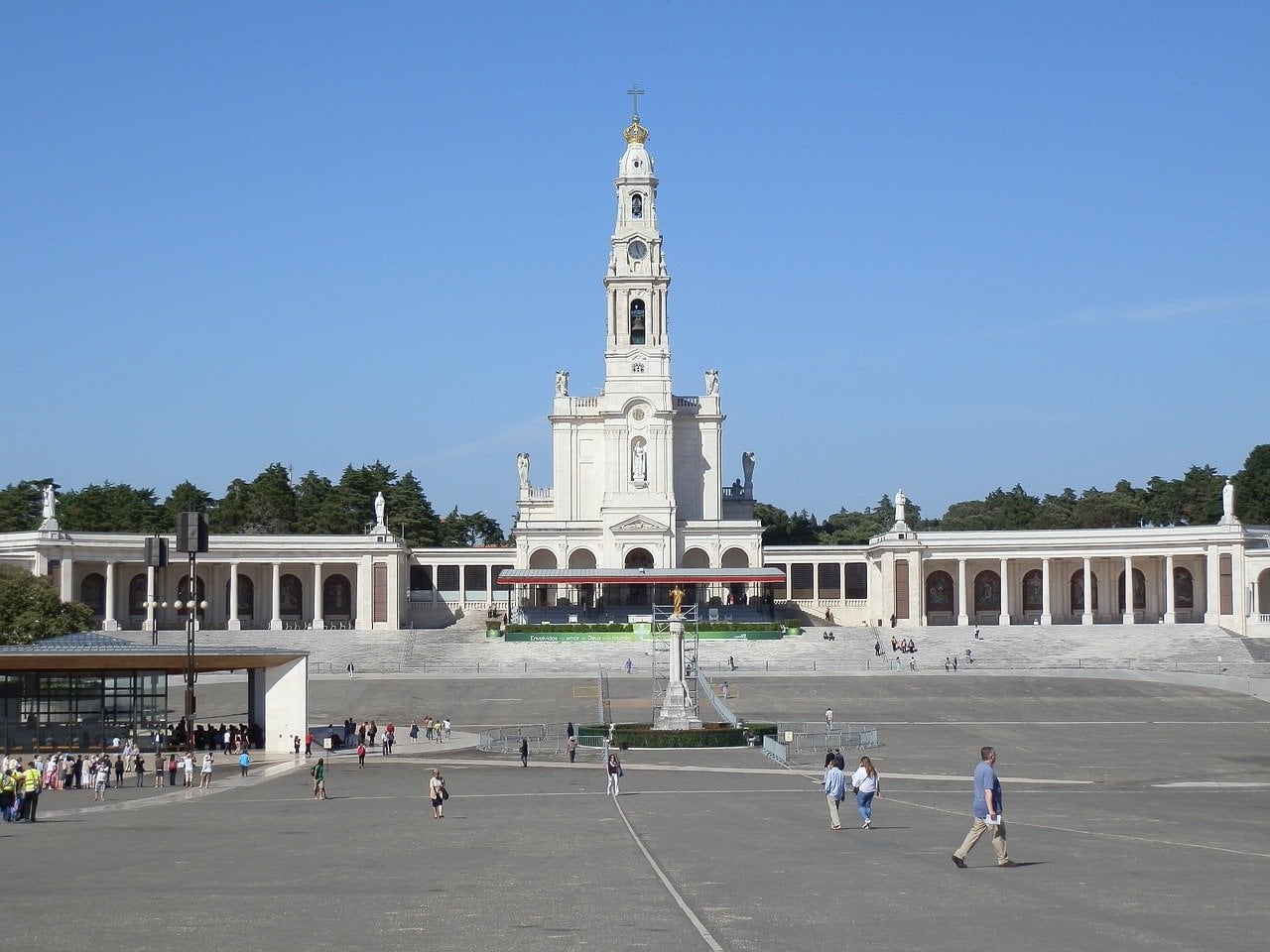
It all started one day in May 1917, when three local children, who had spent the day tending to a flock of sheep, returned to their small village. They claimed to have encountered the Virgin Mary, who apparently told them she would return to see them. The children proceeded to “visit” the Virgin Mary monthly for the next six months at the same place.
Obviously, plenty of people were sceptical. I certainly would have some questions! But lots of people believed the children, and soon plenty of others followed the children to the same spot. There, the oldest child, Lucia, would “communicate” with the Virgin Mary.
This spot is now home to a huge religious complex and pilgrimage site with numerous churches and monuments. It’s called the Sanctuary of Our Lady of Fatima and people flock here from all over the world on a religious pilgrimage. Obviously, to them, it’s one of the most important landmarks in Portugal.
Admission to the complex is free!
10. Queluz National Palace
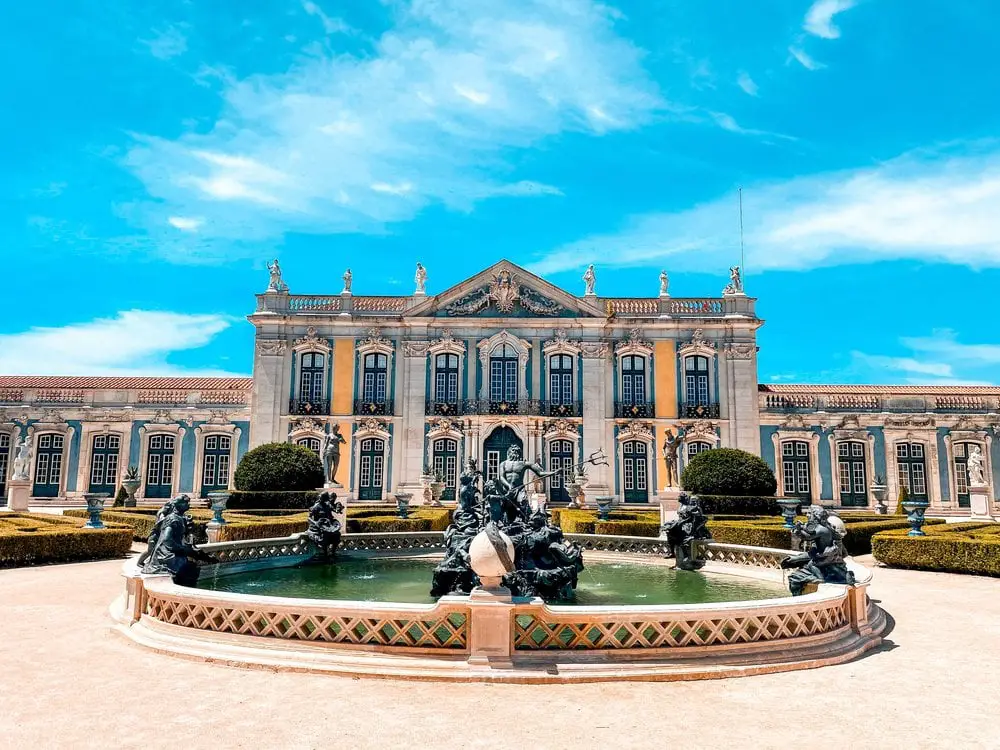
Ever wanted to visit a Palace with absolutely nobody else there? One of Portugal’s hidden gems, but undoubtedly one of the best landmarks to visit near Lisbon, is the Queluz National Palace. It was one of my very favourite places I visited during my two weeks in Portugal!
Modelled after the Palace of Versailles, the Queluz Palace was built in 1747. It was, for a short while, the official home of the Portuguese royal family. Their residence at Queluz began in the late 1700s but the family had to flee to Brazil in 1807, when Napoleon was closing in on Portugal.
As well as the palace you also can’t miss the Queluz Gardens, which are the most beautiful gardens I’ve ever seen. Perhaps what makes them so special is that we didn’t see any other visitors during our stroll. We had the whole gardens to enjoy for ourselves!
The Queluz Palace’s yellow and blue exterior is very unique, and these bright colours make the palace one of the best landmarks to visit in Portugal.
Entry costs €10, and you can get your ticket here!
11. Evora Roman Temple
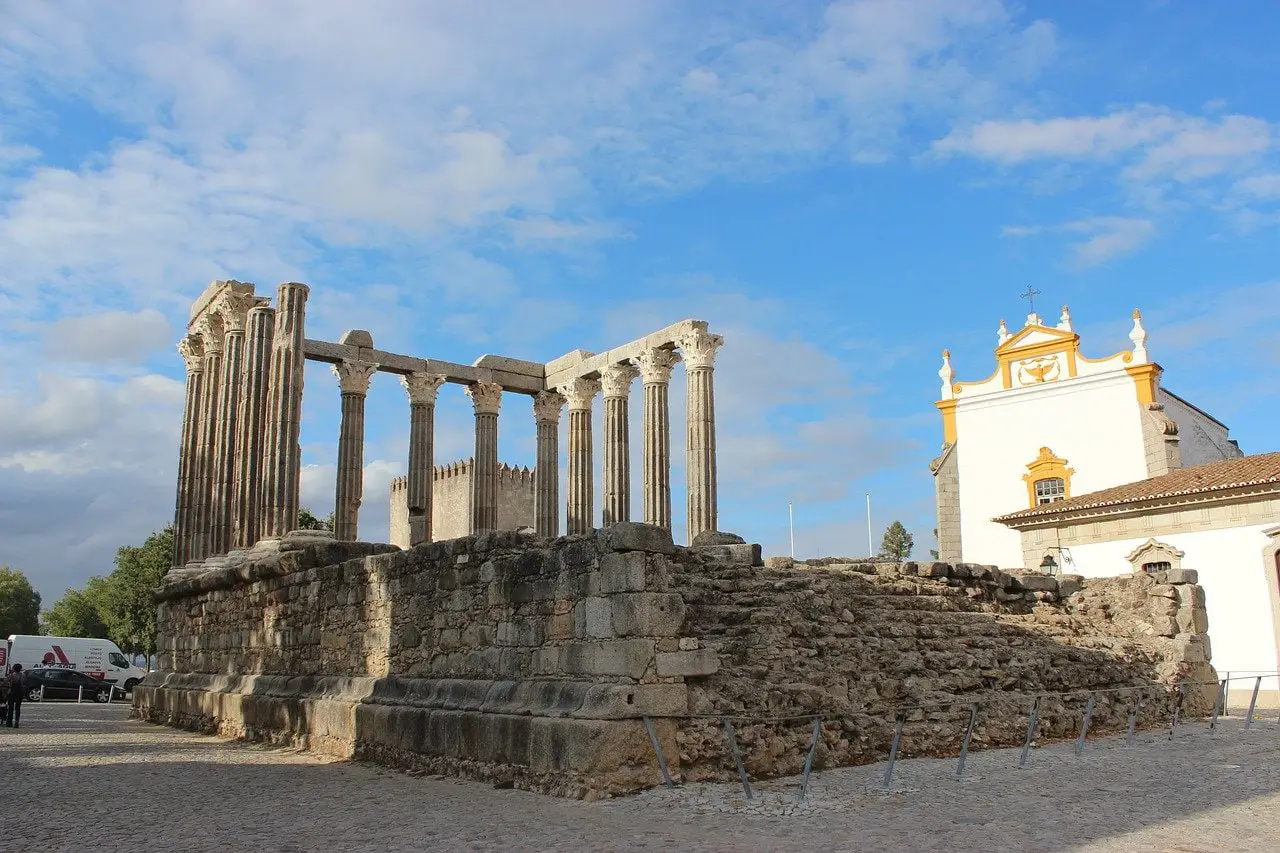
In the Alentejo region of Portugal you’ll find the UNESCO listed town of Evora, which has a landmark you maybe wouldn’t expect to see in Portugal… A Roman temple!
The temple dates back to the 1st century, and, for something so old, it’s very well-preserved indeed. Confusingly, many people (locals included) refer to the temple as the Diana Temple. This was due to a rumour that started in the 17th century explaining that the temple was built in honour of the Roman goddess of the hunt, Diana.
Actually, it’s not too clear why the temple was erected. Some believe it was to worship Emperor Augustus, who was treated as a God. Others argue it was built to worship Julius Caesar.
Towering over the base of the Temple are the original 14 Corinthian columns. When you think about how long they’ve been standing it’s mind-blowing! The Evora Roman temple is easily one of the most unique landmarks in Portugal. Because the temple is in the middle of the town square there’s no entry fee. You can also visit at any time of day.
Evora is around 130km from Lisbon, making it one of the most popular day trips from the city!
12. Monument to the Discoveries
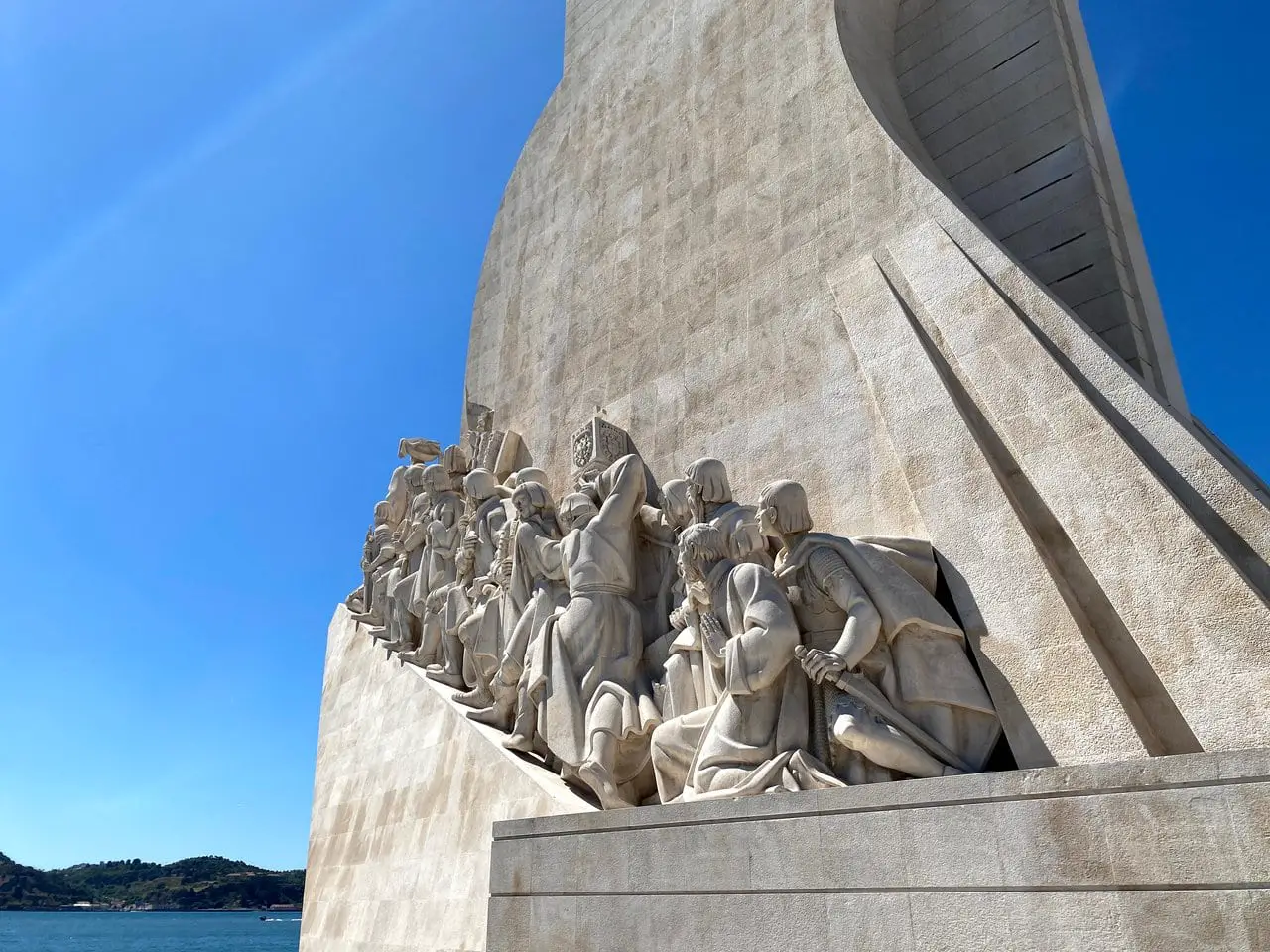
This epic, 52-metre tall structure should be firmly on any Lisbon itinerary. It’s one of the most recognisable Portuguese landmarks by far! Revealed in 1960, on the 500th anniversary of Henry the Navigator’s death, the Monument to the Discoveries (Padrão dos Descobrimentos) is one of the best things to see in Belém.
The ship-like stone monument features giant stone carvings of some of Portugal’s most famous explorers. If you look at the prow you’ll see the sculpture of Henry the Navigator, who “discovered” Madeira, the Azores, and Cape Verde.
Just in front of the monument, on the ground, you’ll find the Mappa Mundi. This marble map of the world features important dates in the history of Portugal’s exploration, and provides interesting context to the Monument.
Inside the monument you’ll find a small museum with rotating exhibitions documenting the history of the monument, of Portuguese exploration and of Lisbon in general. If you enter the monument you definitely need to get the lift to the top to visit the observation deck. From here, you’ll get a birds-eye views over Belem and the Tagus River.
Entry to the Monument to the Discoveries costs €6.
13. Bom Jesus do Monte
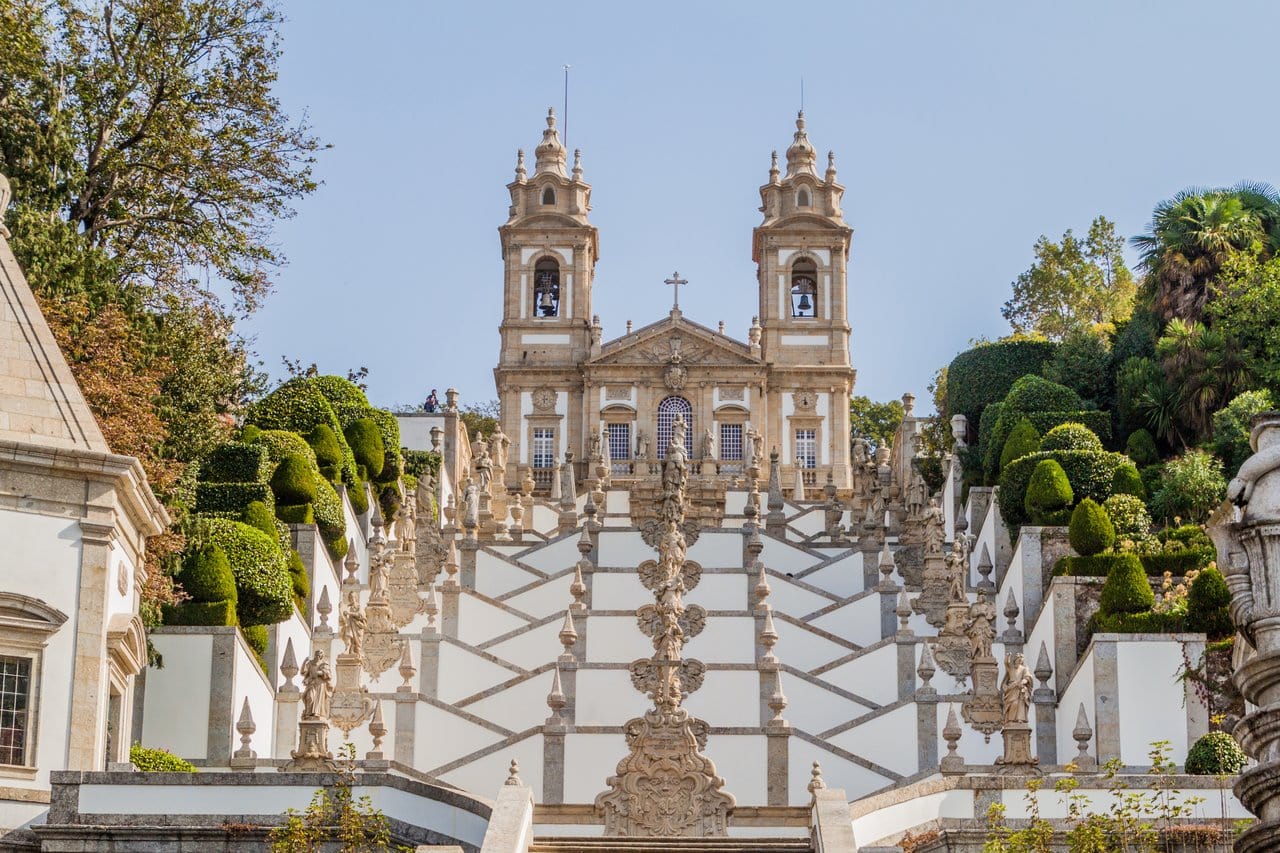
The Sanctuary of Bom Jesus do Monte, or just Bom Jesus for short, is another famous man-made landmark and pilgrimage site in Portugal. That said, it has a lot to offer all tourists, not just pilgrims.
You’ll find this Baroque staircase structure just outside the city of Braga, in Northern Portugal. You really will feel like a pilgrim when you climb up the 580 steps to the top. However, you will be rewarded by awesome views over the surroundings. If you feel like the steps are a struggle, just look around you. Some pilgrims do this journey on their knees.
Ouch!
If you’re unable to, or just don’t want to walk, there is a funicular which costs €2.50 for a return ticket or €1.50 one-way.
Bom Jesus is a landmark that you just won’t be able to resist taking photos of because it looks so unique! Its white granite zig-zag shape is instantly recognisable, and many people time their visit to coincide with sunset, when the views really are next-level.
Since Bom Jesus is Braga’s number one tourist destination there aren’t a million other things to do in the city. For this reason, you may want to combine a trip to Braga with a trip to the nearby medieval city of Guimarães. Find out how to do that here!
14. Pena Palace
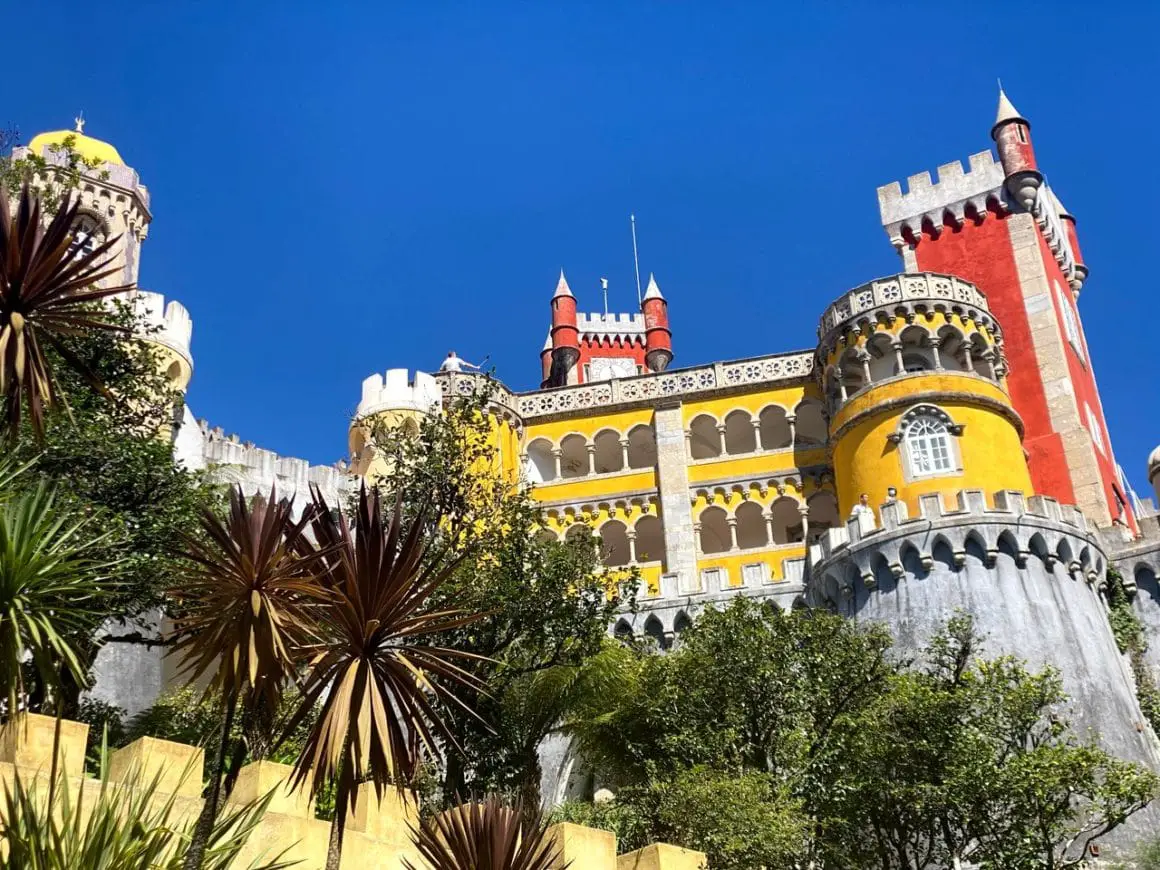
Last but not least on this kick-ass list of the very best landmarks in Portugal is the Pena Palace. Not only is this one of the most recognisable Portuguese buildings ever, but it’s also even more beautiful in real life.
You’ll find the Pena Palace in the hilltop town of Sintra, just a short train ride away from Lisbon. Although Sintra is actually home to quite a few palaces, the main attraction here is definitely the Pena Palace. Pretty much every visitor to Sintra visits it!
To plan your trip to the palace I recommend that you check out my post all about visiting the Pena Palace! If you’re short on time, here’s the lowdown:
The Palace was constructed between 1842 and 1854 as a gift from Prince Ferdinand II to his wife, Queen Maria II. On a visit to the Pena Palace you can explore the interior of the palace as well as its vibrant exterior, but, let’s be real – nothing could top the insane beauty of its red and yellow outside!
Most palaces and castles in Europe look similar, so it’s a delight when travelling in Portugal to visit such an interesting and uniquely decorated royal residence.
Entry tickets cost €14, and you can get them here!

